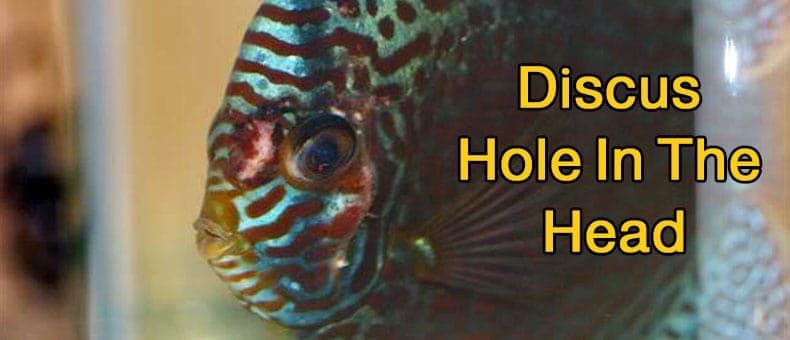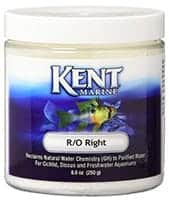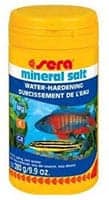
The hole in the head disease (or the lateral line erosion condition) is caused by a viral, bacterial, or internal parasite infection specifically flagellated protozoan parasite named Spironucleus or Hexamita. This disease affects other cichlids such as the Symphysodon Discus, Oscars, e.t.c. Sometimes this disease could lead to death, but it’s not always true in all cases. Once this disease is noticed. In most cases where proper treatment and dieting have been used, a complete recovery had been achieved.
Table of Contents
- Is Hole In The Head Contagious?
- Hole In The Head Signs And Symptoms
- Discus Hole In The Head Prevention Method
- Related Questions
- Conclusion
Is Hole In The Head Contagious?
The hole in the head disease is not a 100% transmissible disease, yet it could be transmitted and infect other Discus fishes in the tank, however, it is not normally considered as a contagious sickness among Discus fish and aquarium environments. This could be said due to the direct relationship between lateral line erosion disease (HLLE) and nutrition deficiency in Discus fish.
Hole In The Head Signs And Symptoms
- Small sores above the Discus’ eyes and on the sides of the head.
- Small pits around the head of the Discus and/or it’s a lateral line.
- Small holes and lesions on the fish’s skin and around the lateral line, which is the most common symptom of the hole in the head disease.
- Stringy mucus on skin erosion and wounds.
- Secondary infections and eventually death in Discus fish.
- White poop in some cases.
As stated before, fortunately, the hole in the head disease is not hard to treat at all. However, a quick and proper diagnosis is required to treat the head and lateral line erosion disease effectively. Below, you will learn about the treatment options available for HITH. If you have any Discus fish or other cichlid with holes, pits, and lesions around their head and face, just do not get scared and follow the instructions below to treat your Discus hole in the head problem.
What Causes Hole In The Head Of A Discus?
There are 8 reasons behind Hole In The Head in Discus:
- Flagellate parasite Hexamita.
- Secondary bacterial or fungal infections.
- Poor water quality.
- Long-term use of activated carbon in Discus’ tank.
- Frequently feeding of beef heart and frozen bloodworms.
- Vitamin deficiency and bad/poor diet.
- Minerals and calcium deficiency in the aquarium body.
- Increased stress levels in Discus fish.
The main cause of the hole in the head disease in the Discus fish is not fully certain or known, yet, several valid theories that connect some conditions with the increased cases of the disease have been known. The presence of only one causative attribute may not be a valid cause, but a combination of more than one causative factor is likely to be valid for the hole in the head disease case.
Flagellate parasite Hexamita
A common contributing factor is the flagellate parasite Hexamita. This parasite mainly infects the intestinal tract, after which moves to affect the gall bladder, abdominal cavity, spleen, and kidneys. As the disease progresses, the classical lesions of a hole in the head disease show up. The discharge of small white threads that contain parasitic larvae will take place as a result of an opening in the lesions
Secondary bacterial or fungal infections
The opening in the lesions may further be affected by a secondary bacterial or fungal disease which may result in more serious disease and later death
Minerals and calcium/vitamin deficiency in the aquarium body
Another valid finding is that a mineral or a vitamin imbalance may increase the chance for the Discus fish to the development of the disease.
In the same vein, the mineral imbalance may be due to an increase in Hexamita organisms in the intestine, which may lead to malabsorption and a reduction in the absorption of the needed vitamins and minerals.
Frequently feeding of beef heart and frozen bloodworms
Many people have complained about feeding their Discus with frozen worms, they are claiming including me that their Discus fishes star having some health issues or internal parasites like Hexamita and other worms infections after several times of feeding.
Long-term use of activated carbon in Discus’ tank
Some aquarists have claimed a relationship between the use of activated carbon and an increase in the disease. Some experts believe that the carbon may reduce or virtually remove some of the beneficial minerals found in the water resulting in an increased incidence in the disease.
Increased stress levels in Discus fish
Stress enhancing conditions will also increase the incidence of this disease, hence Stress can affect the immune system of the Discus.
Poor water quality
Poor water quality, mal-nutrition, or overcrowding are all common stress factors that can pose a problem.
How Do You Treat Hexamita?
As described before, the hole in the head is not a stubborn disease to treat, mostly in Discus fish. This could be easily eradicated if the disease is at its first stage. All that is required from you is to quarantine the fish and follow the following steps below.
[STEP1] – The Application of Medication
The first goal in the treatment of the Discus hole in the head disease is to control and eradicate the causative pathogen, which is Spironucleus flagellate or Hexamita. To achieve this, you should use medications that are active and effective in controlling the protozoan parasites. Ensure that you follow the instructions found or gotten from the medication use in a stepwise order.
The healing time phase should be fully completed, as the white holes should be fully closed and invisible on the head of the Discus fish. Below is a list of good and effective medication to treat hole in the head disease in the Dicus fish.
The most used medicine to treat hole in the head disease not only in Discus but all other ornamental tropical fish are listed below:
- Metronidazole is known as Flagyl (also can use eSha Hexamita).
- API General Cure™ Powder.
- Hikari Metro plus are another effective cure to treat HITH in Discus.
[STEP2] – The Use of Healthy Foods and Diet Rich in Vitamins and Minerals
[1] – Remove all activated carbons from the filtration system.
Though there hasn’t been any proof to back up the effect of activated carbon with respect to the hole in the head disease, various researches show that there may be a well-increased chance of the Discus fish developing the head and lateral line erosion disease which also affect all tropical fishes by reducing and eventually removing all the important minerals from the water.
[2] – Avoid the use of pure R/O or distilled water.
There are some needed and functional minerals and trace elements that are useful to the Discus fish. As aforementioned, one of the primary reasons for this disease is the deficiency of minerals in the water.
Discus fish should be given a balanced diet, also pellet food, and vitamins e.t.c.


Discus Hole In The Head Prevention Method
Prevention primarily focuses on reducing any stress affecting the Discus fish. Stress, whether in the form of parasites, poor nutrition, or poor water quality, all-cause a suppression of the fish’s immune system, which makes them more susceptible to this or any other disease.
Always be quick to notice the presence of a disease from the signs and symptoms the Discus fish exhibit and be swift to quarantine and administer treatment.
Related Questions
Is Hole In The Head Bacterial Or Fungal?
Hole in the head in the Discus fish is mainly a bacterial infection. This disease might be triggered by a bad resistance by the Discus fish in conjunction with poor water quality. The aquarium most times contains the pathogenic organism, which causes the hole in the head disease. Due to an over increased nitrate content, the mucous layer of the Discus fish can be attacked, causing the high tendency for bacterial to hide comfortably on the skin of the Discus. This may result in to hole in the head of the Discus fish.
Can Discus Fish Recover From Hole In The Head?
Many aquarists ask a common question on the full recovery of the Discus fish from the hole in the head disease. The answer is yes. This disease is treatable with some deliberate steps since it is caused by several known factors such as flagellate parasite Hexamita, mineral imbalance e.t.c.
Conclusion
The Discus hole in the head disease is a bacterial based disease that affects the Discus fish, mainly due to malnutrition and poor water quality. It slowly affects the skin of the Discus fish resulting in an opening in the lesion in the fish. It is not a difficult disease to treat. With a quick and early response to signs and symptoms, it can be eradicated following the aforementioned treatment steps.

Hi thanks for all the info. So in a nut shell you treat for bacteria and flagellate. I notice my Discus has 2 small holes that looks red. It’s possible HITH as it had one now she has two. Pls assist away forward.. I do have metronidazole do I need anything else.
Thank you kindly
Metronidazole & eSha Hexamita are both good options for you.
Good morning
I have an electric blue Accra which may have HITH.
Should the whole tank be treated, or should the affected fish be isolated and treated in quarantine?
Thanks
Better to treat the whole tank.